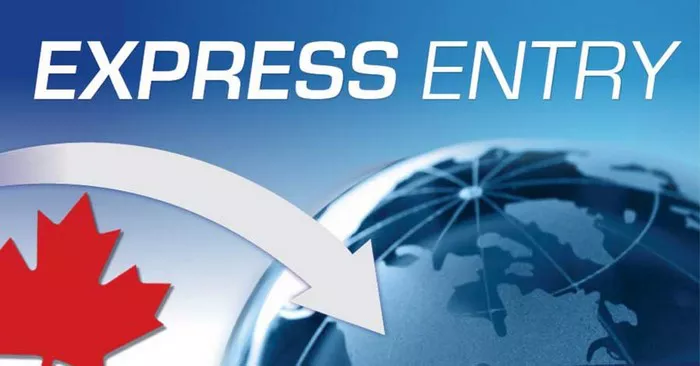In the realm of Canadian immigration, the Express Entry system stands as a pivotal gateway for skilled workers aiming to make Canada their new home. Central to this system is the Express Entry draw, a regular event that determines which candidates will receive invitations to apply for permanent residency. This article delves deep into the mechanics of the Express Entry draw, from its purpose and criteria to its impact on prospective immigrants and the Canadian economy.
Express Entry Introduction
Introduced in January 2015 by Immigration, Refugees and Citizenship Canada (IRCC), Express Entry revolutionized how Canada manages applications for its three main economic immigration programs: the Federal Skilled Worker Program (FSWP), the Federal Skilled Trades Program (FSTP), and the Canadian Experience Class (CEC). The system operates on a points-based Comprehensive Ranking System (CRS), where candidates are ranked against each other based on factors such as age, education, work experience, and language proficiency.
Purpose and Significance of the Express Entry Draw
The Express Entry draw serves a crucial role in selecting candidates from the pool of registered applicants who meet or exceed a specified CRS score threshold. The draw is held regularly by IRCC, typically every two weeks, to issue Invitations to Apply (ITAs) for permanent residency. The CRS score cutoff in each draw varies based on the number of candidates in the pool and the immigration targets set by the Canadian government.
Mechanics of the Express Entry Draw
Each Express Entry draw follows a well-defined process governed by IRCC:
Determining the Draw Frequency: IRCC determines the frequency of draws based on immigration needs and targets. Draws typically occur bi-weekly, although this can vary based on operational requirements and government priorities.
Setting the CRS Score Threshold: Before each draw, IRCC announces the minimum CRS score required to receive an ITA. This score is determined based on factors such as the number of candidates in the pool, the size of the draw, and the immigration goals of the Canadian government.
Conducting the Draw: During the draw, IRCC’s system selects candidates from the Express Entry pool who meet or exceed the CRS score cutoff. Those selected receive an ITA to apply for permanent residency.
Issuing Invitations to Apply (ITA): Candidates who receive an ITA have a specified time frame (usually 60 days) to submit their application for permanent residency. The ITA outlines the documents required and the steps to follow to complete the application process.
Processing Applications: Once candidates submit their applications, IRCC processes them based on the program’s requirements, including background checks, medical examinations, and verification of supporting documents.
Factors Influencing the CRS Score
The CRS score is pivotal in determining a candidate’s ranking within the Express Entry pool. Key factors influencing the CRS score include:
Core Human Capital Factors: These include age, education level, official language proficiency (English and French), and Canadian work experience.
Skill Transferability Factors: Factors such as foreign work experience, education level, and official language proficiency contribute to a candidate’s adaptability in the Canadian labor market.
Additional Points: Candidates can earn additional points through factors such as a provincial nomination, a valid job offer in Canada, or having a sibling who is a Canadian citizen or permanent resident.
Impact of Express Entry Draws
The Express Entry draw system has several significant impacts:
Facilitating Skilled Immigration: By prioritizing candidates with high CRS scores, the draw system ensures that Canada attracts skilled individuals who are likely to succeed economically upon arrival.
Meeting Immigration Targets: The draw system allows Canada to manage its immigration intake efficiently, aligning with annual immigration targets set by the government.
Economic Contribution: Skilled immigrants contribute to Canada’s economy by filling labor market gaps, starting businesses, and driving innovation.
Family Reunification: Successful candidates can sponsor their family members to join them in Canada, promoting family reunification and integration.
Challenges and Criticisms
Despite its successes, the Express Entry draw system faces some criticisms and challenges:
Competitiveness: The high CRS score cutoff in some draws can make it challenging for candidates with lower scores to receive an ITA.
Processing Times: While Express Entry aims to expedite the immigration process, processing times can vary based on individual circumstances and the volume of applications.
Subjectivity of Points Allocation: The allocation of points for factors such as education and work experience may not fully reflect an applicant’s potential contribution to the Canadian economy.
SEE ALSO: WHO DETERMINES IMMIGRATION POLICY?
Recent Developments and Future Outlook
In recent years, IRCC has made several enhancements to the Express Entry system to improve its effectiveness and responsiveness to changing immigration needs. These include:
Increased Immigration Targets: Canada has progressively increased its immigration targets, aiming to admit over 400,000 immigrants annually by the mid-2020s.
COVID-19 Pandemic Response: IRCC implemented temporary measures during the COVID-19 pandemic to support immigration processing and accommodate applicants affected by travel restrictions.
Provincial Nominee Programs (PNPs): Collaboration with provincial and territorial governments continues to play a crucial role, with many provinces using PNPs to nominate candidates from the Express Entry pool.
Looking ahead, the future of the Express Entry draw system will likely continue to evolve in response to global trends, economic needs, and demographic changes in Canada. IRCC remains committed to refining the system to ensure it meets its objectives of attracting skilled immigrants who contribute to Canada’s economic growth and diversity.
Conclusion
The Express Entry draw system represents a cornerstone of Canada’s immigration strategy, offering skilled workers a streamlined pathway to permanent residency based on merit and economic potential. By understanding its mechanics, factors, and impact, prospective immigrants and stakeholders can better navigate the complexities of Canadian immigration and contribute to Canada’s vibrant multicultural society.
As Canada adapts to new challenges and opportunities, the Express Entry draw will remain an essential tool in shaping the nation’s future through skilled immigration.


